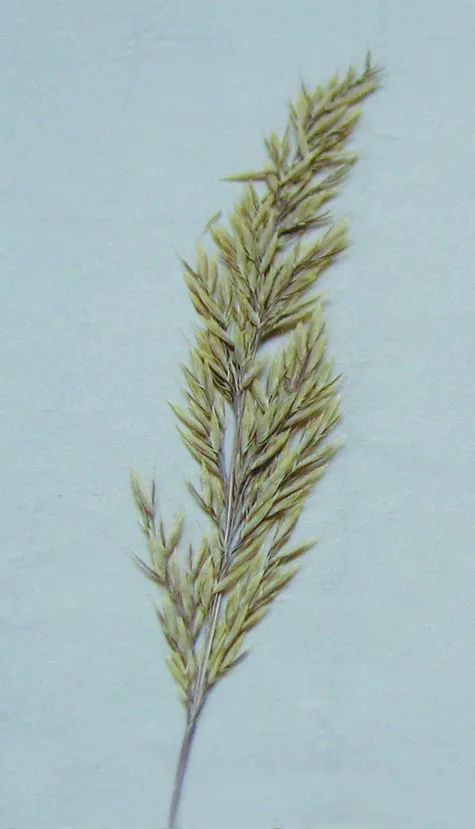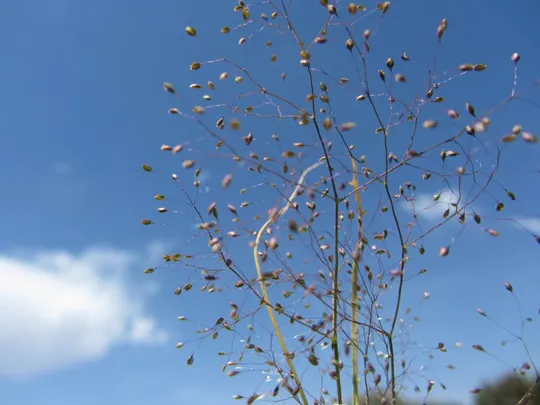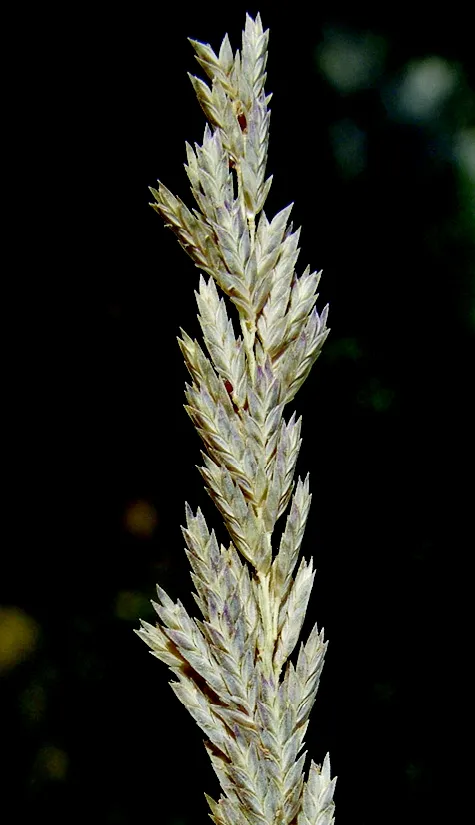Oriental Rhizocephalus
Rhizocephalus orientalis
Rhizocephalus orientalis grows in only in two regions: in the Golan and the Negev Highlands. In these regions, the species was found only three times to this day. Twice the plant was found near the Lots cisterns and a single time near Merom Golan. Although a comprehensive rare species survey has not been conducted in these regions, many botanists have surveyed there. In spite of all their efforts, the plant has not been found at other sites.
In the Negev Highlands – loess patches on limestone slopes in steppes of Artemisia sieberi. On the Golan Heights – the edge of the Merom Golan water reservoir (a different habitat than that of the Negev Highlands, reminiscent of its systematic proximity to the genus Crypsis).
Rhizocephalus is a monotypic genus. In the past, the species belonged to the genus Heleochloa, which was merged with the genus Crypsis. That is, Rhizocephalus is systematically close to Crypsis, despite the fact that the Crypsis species are typical of seasonal puddles and wetlands, whereas Rhizocephalus grows on broad grassy plains.
• Rhizocephalus orientalis is a common species in Edom in Jordan that was only discovered in Israel it after the 1970s. We do not believe the species is episodic, but that like many other annuals that adjusted to dry conditions, it probably has a soil seed bank, which enables its regular appearance.
• The species exists in only two sites, extremely distant from each other. The number of individuals observed is apparently very small. It was found in the Negev Highlands in the Lots cisterns twice in different years, which tends to suggest to the existence of a stable population.
• The species is an eastern peripheral – Israel is the southwestern edge of its global distribution.
• R. orientalis is not vulnerable in the Negev Highlands, but i in the Golan it may be threatened by overgrazing and development of water reservoirs.
Rhizocephalus orientalis is a very rare species, found so far in regions in which no rare species survey has been conducted. Therefore, it is strongly recommended that a thorough survey of Negev Highland and Northern Golan be carried out to try to map additional sites of the species. The two sites where R. orientalis was located should be declared nature reserves, and the populations should be monitored twice yearly.
Western Irano-Turanian; grows in Syria and Lebanon, in Turkey, only in Anatolia, northern Iraq and northwestern Iran. In Jordan R. orientalis grows only in Edom, on loess patches on limestone slopes in steppes of Artemisia sieberi at altitudes of 1,200-1,500 meters. Absent from the mountains of Sinai and Arabia.
Rhizocephalus orientalis is a minuscule annual Gramineae, which was found in Israel at only two sites in two very distant regions. Its appearance could be interpreted as episodic, but R. orientalis could also be considered as an additional representative of a group of plants from the high semi-steppe, quite common in Edom and Ǧebel Druz, and that was once probably more common in the mountains of Israel. In this group, there are many rare species, which are on the verge of extinction in Israel (such as Ziziphora tenuior, Lallemantia iberica, Acinos rotundifolius, Aegilops crassa, Onopordum macrocephalum). This group is a major contributor to Israel's unique biodiversity, so it is important to preserve them.
Current Occupancy Map
| 1000 squre meter pixel | 5000 squre meter pixel | 10000 squre meter pixel | |
|---|---|---|---|
| number of observations | 0 | 0 | 0 |
| in total pixels | 0 | 0 | 0 |
| Family | Gramineae |
| Classification | On the endangered species list |
| Ecosystem | High Semi-Steppe |
| Chorotype | Western Irano – Turanian |
| Conservation Site | Merom-Golan, Negev Highlands |
| Rarity |
1
5
6
|
|---|---|
| Vulnerability |
0
0
4
|
| Attractiveness |
0
0
4
|
| Endemism |
0
0
4
|
| Red number |
1
3.2
10
|
| Peripherality | N |
| IUCN category | DD EW EX LC CR EN VU NT |
| Threat Definition according to the red book | Vulnerable |
 Based on:
Based on:






